#i have a bar of deviation for adaptations. examples:
Explore tagged Tumblr posts
Text
if netflix makes Luo Ji non-chinese I'm going to throw myself off a fucking cliff
#*incoherent screaming*#if i have to see another “but netflix has to make the characters appeal to the bigger audience” comment im going to fucking lose it#i have a bar of deviation for adaptations. examples:#lotr: its all fine and dandy i love it#the hobbit: getting a little close to dangerous territory but i'll take it#dune: perfection#foundation: no wtf#rop: DO NOT FUCKING SPEAK TO ME OF THIS SHOW#i will still watch 3bd when it comes out#but I will be fucking PISSED if what i'm seeing about the characters is real#“give them personalities” ok yeah sure im fine with that#“the plot affects the entire population of the earth” ok sure but why are 75% of the cast non asian now.#“we need diversity! plus you need the audience to appeal to the audience” im going to fucking bite you. fuck off.#no hate to the actors i'm sure they did a great job its not their fault anyway#but seriously if they made luo ji non-chinese im actually going to fucking lose it#3 body problem#three body problem#remembrance of earth's past#netflix#actually if they made zhang beihai non-chinese as well then i'm just going to- *internal screaming*
49 notes
·
View notes
Text
Invincible's adaptation has succeeded to the extent that it has in large part due to the fact that the creators of the original book are closely involved; this has allowed the show to effectively act as a second draft of what was already a story with very strong bones, allowing them to systematically punch up and tie together story beats and themes that, by virtue of the seat-of-the-pants writing process of monthly ongoing comics, were significantly more diffuse and emergent in the original. An additional element of why I think the adaptation is succeeding is that the material being adapted was never in any particular danger of biting the hand that feeds; while the comic had a lot to say about toxic masculinity, the pitfalls of strongman authoritarianism, and the superhero genre's historical incuriosity about the material reasons that people turn to crime, it never had much to say on the topic of corporations specifically. (That's fine. Not everything is about everything.)
By contrast The Boys was, at least initially, largely lauded as a success due to its removal from the influence of its creator, Garth Ennis, whose edgelord sensibilities are generally perceived to have been brought under control by the moderating influence of a writing team willing to deviate from the story as written and bring the entire plot more in line with superheroes as they exist in the current zeitgeist. The tradeoff, and potentially the poison pill, is that for all their deliberately unpalatable presentation, Garth Ennis's politics in that comic were aggressively and pointedly anti-corporate and anti-military-industrial complex, in a form that can only survive up to an extent in a production backed to the hilt by Amazon. Furthermore, the argument that Amazon's stewardship acts as a moderating influence on the excesses of the original becomes disingenuous after a certain point, because the show is more than willing to both produce home-grown excess, and to cherry-pick overtly shocking beats from the comic without any of the surrounding scaffolding that made those beats actually interesting. Tek-Knight and Love Sausage are two high-profile examples of the show doing this; none of the surrounding context that made Tek-Knight gut-bustlingly funny, or Love Sausage genuinely heartfelt, survived translation. The shock value survived, what Ennis was actually trying to do didn't.
Do I think The Boys (2006) is good? Do I recommend it? No, certainly not unconditionally. Do I think that the adaptation stripping the auteur elements will result in decisive improvement over the source material? To an extent it has so far, but the bar is some combination of "in hell" and "a weird wiggly shape informed by the industry context in which the original was produced that resists one-to-one analysis." Ultimately my conclusion on whether this was worth it is going to come down to whether they stick the landing or not. And I'm going to be real with you, Supernatural wound up running for 15 seasons
133 notes
·
View notes
Text
Porsche & Chay's Brotherhood in KinnPorsche the Series
Brotherhood and familial relationships are one of the most prominent themes in KP, as we all know.
And personally, I think one of the most fascinating and important deviations that BOC had chosen to take with their adaptation of the novel is having Porsche and Chay drift apart by the end of the story (despite that ending shot of them both hugging their Mama). By having them drift apart, their respective love stories with Kinn and Kim stands on a firmer note. They basically pulled a P&P 2005, which—although a disheartening thing to see—is one that I think was definitely a good choice, as it fits appropriately with KP’s narrative as a whole.
To provide some context, in the novel, Porsche is aware for the most part of Kim and Chay’s growing bond once it's introduced in the story. He doesn’t know the details, and neither Kim nor Chay are really forthcoming about their relationship to their older brothers (which BOC does keep somewhat in the show), but there is some awareness of it in the latter’s part. For Kinn specifically, it’s even a point of contention once or twice, since in being aware of Kim and Chay’s relationship (and knowing his brother’s personality), inevitably he worries about how their relationship would affect his relationship with Porsche. Like in the show, Porsche is understandably protective of Chay, and doesn’t want him getting involved any more than he has to.
Because of Porsche's awareness from the beginning, this allows for them to grow even closer as brothers near the finale of the story, since they both sympathize with each other’s frustrations of what it's like to be romantically involved with a Theerapanyakul, as well as how their respective relationships are perceived by outsiders.
For example, this exchange (Porsche’s POV) between Athee and the brothers when they run into him in their old house:
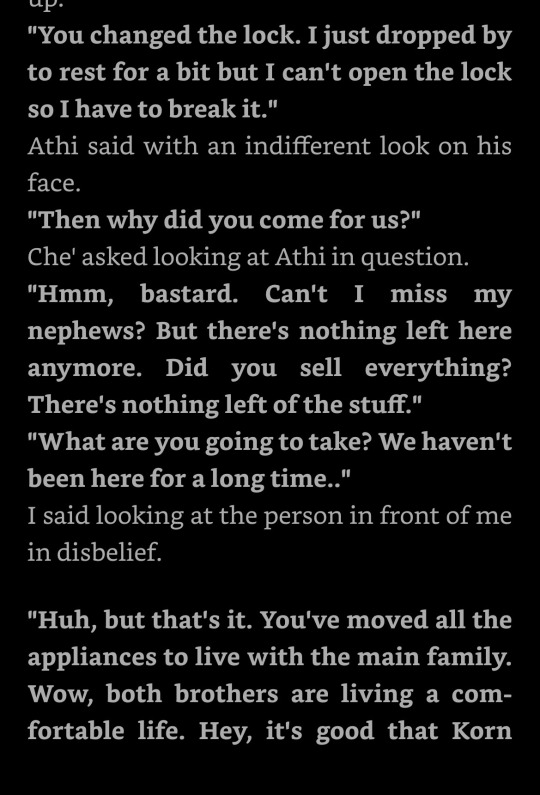

It’s made a point in the novel that Porsche and Chay’s relationship with their respective Theerapanyakul both follow the same trajectory (with a few differences, ofc), besides the fact that pretty much Kinn and Kim fell for the same personality traits and characteristics that the Kittisawasd brothers share. Lol
But in all seriousness, because they have a better understanding of each other due to how their respective romantic relationships have influenced them, they’re more in sync with how they make decisions together regarding their own family.
There’s a scene in the book (Porsche's POV) where Porsche accidentally cuts himself on his foot when he confronts Kinn in anger, once he finds out about Korn’s involvement in his parents’ deaths. He marches straight into Kim’s room and intends to take Chay away, but not before Chay helps him bandage up the cut and calms him down.
They share this poignant conversation, specifically about Chay’s relationship to Kim:
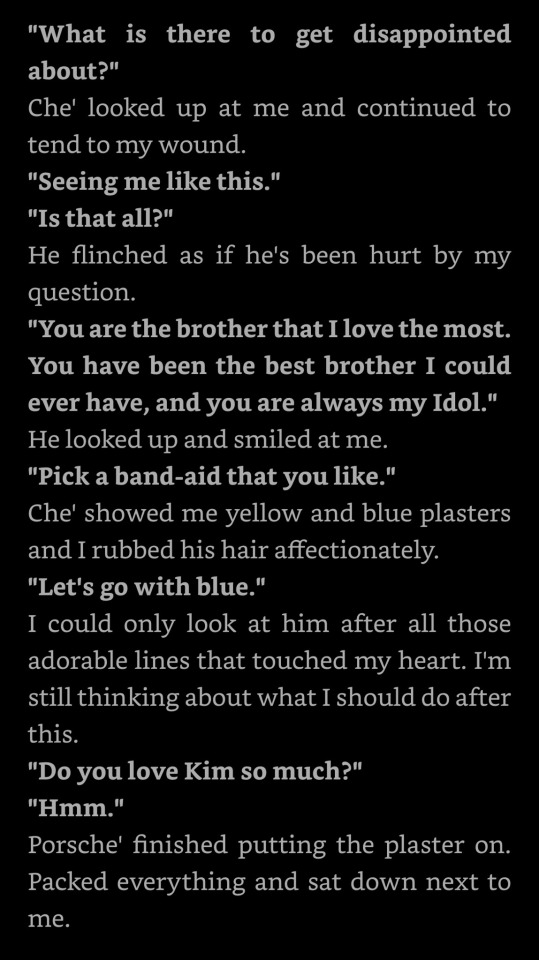
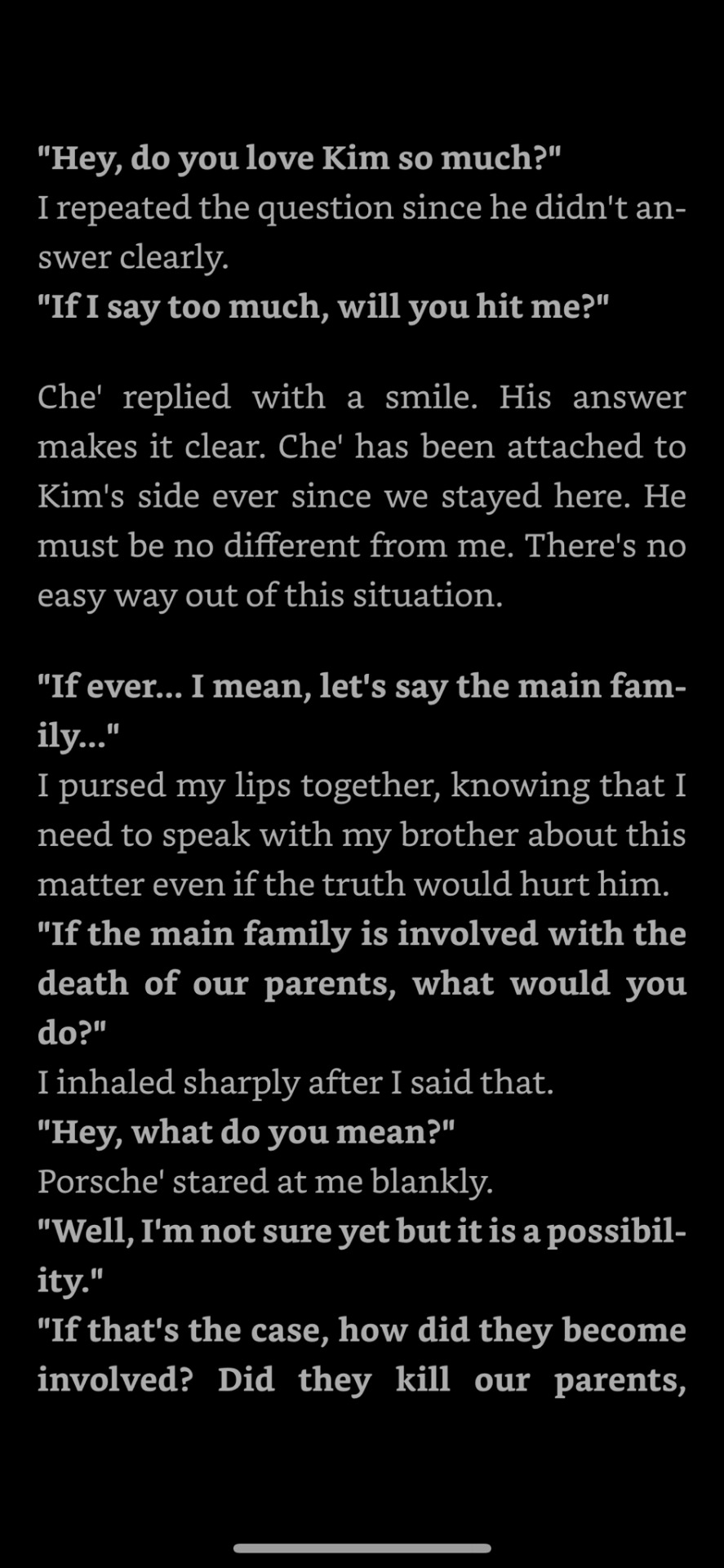
It's a very heartfelt exchange, because Porsche understands he has to take into account his own brother's relationship with Kim, that his actions and decisions also affects his little brother, besides the fact that Chay genuinely looks up to Porsche and sees him as his hero. In doing so, he also acknowledges Chay's maturity, and respects him in that regard, thus allowing for them to become a stronger unit together as brothers, one that's infinitely stronger than what the Theerapanyakul brothers have.
But the show—while keeping loyal to the same character dynamics for both relationships—turns this on its head entirely, and makes it so that Porsche is completely unaware of Chay's relationship to Kim. In making it so that Porsche is unaware, not only is he blindsided by how he protects and parents Chay (case in point: episode 14, bar fight scene), Porchay himself deliberately keeps him in the dark.
In turn, you get a somewhat heartbreaking exchange between the two of them, like this scene in episode 12 when Porsche tells Chay that he no longer has to go back to the compound (yknow, like a liar XD):
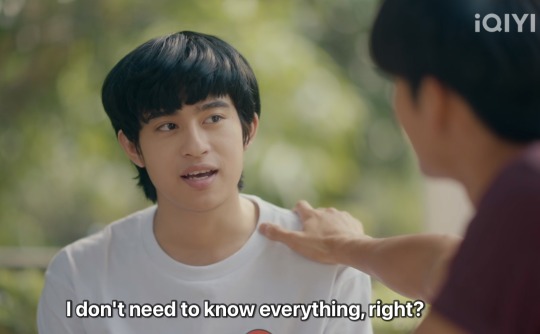
At first, Chay's line is supposed to come off as comforting for his older brother, but what goes unsaid rings just as loudly if not more than what he actually says to Porsche: "I don't need to know everything, right?" Just as you don't have to know everything and what I've been through recently.
Which brings me back to my original thesis: Porsche and Chay drift apart by the end of the show; BOC sacrifices their strong brotherly bond from the beginning, but in turn elevates both brothers’ romantic relationships to stand stronger within the narrative. We won’t ever get to know how well KimChay’s love story could have stood out against the other two had it followed a similar trajectory to KinnPorsche, but I will say that I’m of the firm opinion that KimChay’s original storyline in the show heavily contributed to Jeff and Barcode’s chemistry with each other.
In the show, Chay’s maturity is highlighted in the fact that perhaps for the first time in his life, he deliberately chooses not to involve Porsche in an aspect of his life, a big part of which no doubt, he probably wouldn’t want or know how to explain to his older brother in the first place. This is further compounded by the fact that it was partly due to Porsche’s absence that Chay had latched onto Kim as he did. Chay is a character who has a deep sense of self, and choosing not to involve Porsche in trying to figure out what to do with Kim superbly demonstrates the emotional complexity of his character, despite his young age.
It’s why it makes perfect sense that in the final episode, these two scenes are back-to-back, highlighting the rift between both brothers: we're shown how Chay is conflicted and sobbing about his feelings in light of Kim sending him the song, yet right after, the audience sees how Porsche has no hesitation in pledging his life to Kinn ("My entire life is all yours"), thereby effectively leaving Chay wide open and ready for the taking to the wolf (Kim).
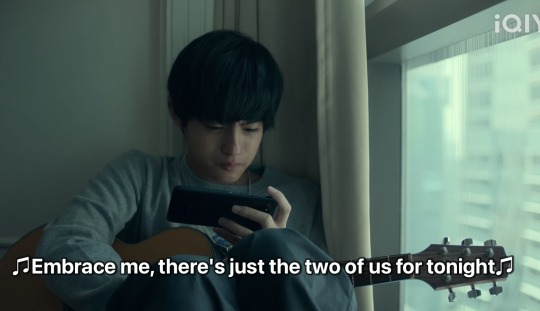
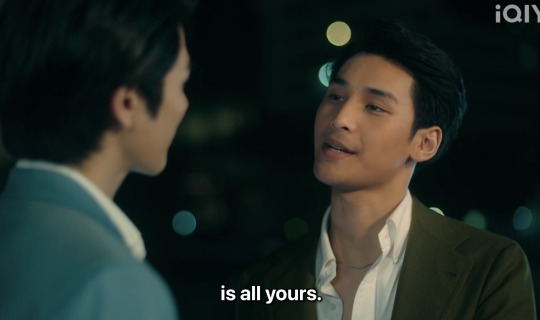
It's almost sinister, to be quite frank, how BOC really did take that step in breaking the Kittisawasd brothers apart. Welp~
Chay is all too aware of the inevitability of change that will come in his life, including his relationship with his brother, as a result of Porsche's choices to join the mafia. Porsche too is very much aware deep down, hence his subsequent actions of downplaying his reasons and trying to maintain the status quo, aka falling back into the genuine affection he has for Chay, like he does in these two scenes, rather than properly explaining himself:
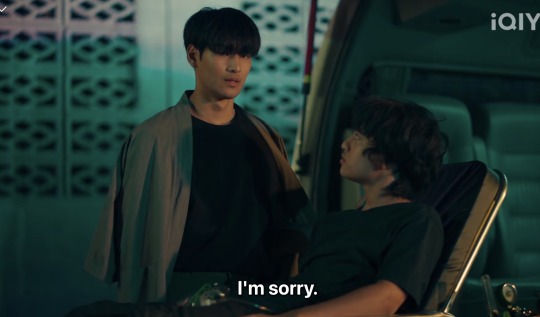

In both of these scenes, Porsche struggles to maintain eye contact with Chay, because he knows somewhere inside of himself that falling back and reiterating his love for Chay won't change the fact that his choice to stay in the mafia was as entirely selfish as it was selfless. Chay calls him out on the hypocrisy of his behavior, and he questions Porsche directly: "Was it really all for me? If it was really all for me, then why didn't you consider how I feel?"
After the kidnapping incident, both Porsche and Kim have a desire to maintain the status quo with Chay. This is shown by how Porsche falls back to voicing his love out loud to Chay as a way to avoid having to explain himself, and Kim by not sticking around outside the warehouse after he got Chay out, so he also wouldn't have to explain himself.
But whereas Porsche gets to successfully keep that illusion because his younger brother allowed it and gives it to him, Kim doesn't get to have the same. Chay doesn't give Kim the same consideration as he does with his brother, understandably so. Thus, the uncomplicated, free-of-misgivings sort of perception Chay had towards Kim quickly crumbles.
As a direct consequence, in the show, the one whom witnesses Chay's struggles of coming into his own as a result of being dragged into the world of the mafia is not Porsche, but Kim; it's Kim who finds out that Chay bailed on his interview at university, it's Kim who sees Chay rebel and partying and drinking, it's Kim who realizes how much danger Chay is still in, despite being away from the compound and the coup by the minor family.
And finally, per my thesis with my deep dive of the bar fight scene in episode 14, in the end it's Kim who's further drawing Chay in towards the world of the mafia and the underbelly of Bangkok.
Because Kim is the witness to all of these things in regards to Chay's character and his actions post!kidnapping, not only does he learn more about the boy he's fallen in love with, he has a deeper understanding of who Chay is that Porsche doesn't have. That in turn makes their love story much stronger in the show, as opposed to the book, despite their bittersweet ending.
Although deviating away from that crucial point of Porsche and Chay's relationship in the book, it nonetheless fulfills the same aspect in the book that by the end of the first KP story, Chay has somewhat matured due to his relationship with Kim, as well as the trust placed on him by his older brother (careless the trust though may be in the show).
Having Porsche and Chay drift apart by the end of the show illustrates one of KP's strongest, most important themes: Falling in love is a very humbling experience. Having said that, love itself is also a very selfish, self-serving emotion.
#kinnporsche#kimchay#meta#I love these two so much#the depth of BOC's storytelling with KP astounds me yet again#kpts meta#kpts novel
69 notes
·
View notes
Note
If nothing else, OPLA’s marketing campaign was downright diabolical. Because the community shift from skepticism to outright hostility towards that same skepticism really started when the show runner went onto that YouTube Reverie a couple years before the show came out. Not only was that the first time the showrunner began doing similar “interviews” with YouTubers (who are, generally speaking, The Worst interviewers), not only is it where many of the common talking points in defense of the show originated from (most notably “It can’t be a 1:1 adaptation” in response to any changes), but he told all these YouTubers that he was *such* a Big Fan of all of them - even the ones who were critical of the live action - and that he was using their videos as inspiration for writing the live action episodes.
Now, I’m not saying that the showrunner was lying when he said those things. But I do think that such a move meant there were no boundaries and a MASSIVE conflict of interest between someone who should be considered a representative for Netflix and creators and fans with huge reach in the fanbase. Because suddenly the OPLA was getting reframed not as another Netflix product, but as a really expensive fan film (that Netflix happened to be funding) - a fan film that Fans Like Them were having an indirect hand in helping create because the showrunner was also a fan of them. Combine that with how heavily it was pushed that Oda had to approve everything, and the whole thing started gaining this undercurrent of the live action adaptation almost being an endorsement of their interpretation of the source material… even as it became more obvious OPLA would deviate heavily from that same source material. But that sentiment only got more pronounced as those same YouTubers started getting opportunities to privately tour the sets and some even spoke to the writers that led to being labeled as unofficial-official consultants. Now, with another One Piece YouTuber from the same Reverie that the showrunner took part in a member of the season 2 writers room, there’s kinda this unspoken atmosphere surrounding that corner of the community that if you heap enough praise onto this adaptation, you too could be scouted for the next season and get endorsed (maybe even meet) Oda too!
It would be funny that the whole thing was that such a painfully transparent move on the showrunner’s part (most blatant example being that he hosted an anime podcast that totally wasn’t made just to endorse the show guys! He just wanted to talk to all his friends about anime and just HAPPENED to make the last episode the same day the live action aired!) if it hadn’t been so effective.
Like I said: diabolical.
I can't speak on whether or not those YouTubers are good interviewers, because I literally cannot blame them for jumping at the opportunity since the early stages WERE exciting and I have no doubt they were barred from asking certain questions. But my opinion is...perhaps stick to journalists for interviews since that's their job hh.
But god the marketing was absolutely insane. Was having Iñaki meeting Oda and putting a hat on his head, AS WELL as Mayumi Tanaka, not insanely performative to anyone else? Does anyone seriously think Oda willingly asked to do this and 'pass down' the hat for a project we KNOW he was continuously not listened to for 😭 all I can see is Netflix doing the MOST to make One Piece fans side with them, and it WORKED!
When the live action came out it got INSANELY review bombed. It'd only been ten minutes since the episodes had come out and the final episode already had hundreds of reviews and hundreds of 10/10s. Netflix did all they could to make sure NO ONE cared to look at this critically, and it's so frustrating that it worked cause I can't even have a reasonable conversation about why this adaptation simply did not work as an adaptation without tons of people biting my head off.
I've said it before but I will never forget the shift of people questioning why the hell this live action was being made, and why the hell the Merry looked like that (la Merry had been leaked) because...guys she looked like shit!! There's no colour or personality in it and she just looks creepy as hell.
And that's what everyone was originally saying! But suddenly you have the show runner reaching out to YouTubers, you have the announcement that Oda's approving EVERYTHING (we know for a fact he didn't), and suddenly the public opinion shifted like THAT!
Honestly if anyone wants an a grade course in how you market to a loyal fandom, just look at what Netflix did! Because EVERYONE can have their own opinion and say they liked it, but as an ADAPTATION? I stand my ground in saying it failed miserably. Because the fact people who NEVER saw the animanga are coming out of the live action with DIFFERENT perceptions of the story and characters- to the point you are genuinely talking about two different characters - the adaptation has failed.
Because, yes, an adaptation can't be 1:1, Matt Owens is correct. But what he DIDN'T say, is when you adapt something, what you need to keep in mind is fidelity. If your goal for an adaptation IS to bring an existing property into a new medium, and WANTING to replicate the characters and EXPRESS the same story - which the producers said this would be MULTIPLE times! - you better damn well hope the non One Piece watchers can jump from the live action to the manga/anime and go "Oh! Yes this is the Luffy that was presented to me in the live action!"
And they don't, especially not with other characters. The amount of non One Piece fans who then picked up the anime and were SHOCKED at just how focused on Sanji and Usopp were in the original should speak volumes, should it not?
Again, you can like the live action! I think it did its job in essentially being an advertisement for the original One Piece. But as a story and an adaptation of One Piece, it just failed. And I simply hate being unable to bring anything into question because Netflix's insane marketing has made this environment of "it's good cause I said so and everything's fine, shut up" 😭😭
It's genuinely an insanely good example of anime to live action adaptation and why, in my opinion, it just doesn't work. But I can't go into any kind of depth about that in a long form video essay the way I'd like to because my anxiety would go off the charts - even if I speak reasonably about it, because of the air created from Netflix's insane marketing. I just think it's kinda sad hhh
34 notes
·
View notes
Text
meta ramble because i can't stop thinking about this
AUTONOMY; connor, even before he deviates, has always struggled with his lack of autonomy. we see it in small things like the way he fixes his tie and shirt for example. doing this allows him a bit of control in a situation where he otherwise has very little. it's the smallest thing he can fix for himself. he's also the only android who acknowledges his own reflection before deviation. he looks at his hair, his profile, his overall appearance. while, yes, he is a more advanced android made to adapt to human behavior to integrate with them more seamlessly… these are small actions done in privacy. like the bathroom in jimmys bar, nobody is there to see him in the mirror, and there are several instances where he fixes his tie without anyone looking.
PHYSICAL TOUCH; it was confirmed during a live stream by bryan that connor is extremely touch starved. which makes perfect sense considering he sees it all around him yet only ever gets to experience touch when it's done in a way to hurt him, or when he’s fighting others. the only one who really ever touches him in a friendly way is hank. and in the scene where you see hank hug connor it’s hank that breaks the hug first and it's obvious connor doesn’t want it to end. i think it is also part of why we see connor rub his hands a lot as he walks, adjusting his tie, etc. it’s small comforting gestures towards himself. i also believe as he deviates more and more and his software becomes more unstable he develops more self-soothing actions like grabbing his collar (MENTIONED HERE), running his hands through his hair, and crossing his arms around his chest (which we see him do a bit of after he deviates and is feeling guilty and distressed about having outed jericho to the law/cyberlife). he just wants to feel and be felt even in the most chaste of ways. he wants to be acknowledged.
5 notes
·
View notes
Text
Artist Statement
My favorite supplies this semester have been fine liner pens and acrylic paints. The vibrant colors of acrylics allow me to convey my creativity in a spectacular way, and the barely noticeable difference pens provide my work intricate details. The vibrating edges project was one example of a champion workmanship assignment where I had to combine my understanding of variety hypotheses with the elements and standards of craftsmanship to create a product that deviated from the norm. It inspired me to explore novel approaches and continuously integrate different media, developing an impressive creative expression. I encountered difficulties managing my imagination when it came to the rearrange tasks during the entire semester. Even though I hadn't really completed tasks like that in a while, it was still a test of my understanding of the standards and representations during the semester. The bar for learning and adjustment was high, but by seeking guidance from online learning activities and engaging in peer discussions, I gradually gained control over the techniques and overcame the underlying challenges.
The midterm job was a significant test, as I had to create a plan that was both captivating and perplexing at the same time. Speaking with coworkers and receiving feedback from my teacher actually proved to be important in improving my process. Additionally, looking at alternative options for elective variety ranges and practicing the midterm at a smaller scale (i.e., a thumbnail size) increased my chances of achieving the desired outcome. To overcome these obstacles, adaptability and a will to learn became essential components. Taking a development perspective allowed me to turn obstacles into opportunities for growth. This semester has improved my understanding of various materials used in craftsmanship and elevated my critical thinking skills even in the face of creative challenges. I'm incredibly grateful for how this semester has not only increased my understanding of various materials used in craftsmanship but also elevated my critical thinking skills even in the face of creative challenges.
(Also uploaded at 5 but didn’t show)
0 notes
Text
Now I am not a black person in America so take my words with half a grain of salt but I actually like the way the show treated Allison's civil rights arc. And Allison was white in the comics so it's also a wonderful example of an adaptation deliberately deviating from the source material in order to tell it's own story while also maintaining the integrity of the original text.
Allison, growing up, was surrounded by her mostly white family. She grew up rich and sheltered and thus didn't have to deal with most of the sociopolitical injustices associated with being a black person in the States. Not to mention her power gave her a huge advantage in life.
We don't see Allison being very involved with any social activism in the present. I very much think her involvement in the Civil Rights movement was born of necessity rather than an innate desire for social change. She doing this because it will ensure safety for the community she has come to call home.
What Allison wants is to be happy with her family (a fair and valid desire, this is in no way a takedown of her). Even when she asks Raymond to leave with her assuring him the movement is still not over in the present day that's more for him than herself.
When she goes back to the present again in season 3 she doesn't show any desire to get involved in politics again. She just wants her husband and daughter back. When she goes to the confederate bar to beat up racists with Diego it's more to blow off steam. It can also be tied in to why she sides with Reginald in season 3. Whole world be damned she wants to see Clair again.
Which is why I like this arc. It's tough to believe Allison cares this much about social justice when we don't hear anything of that sort from her earlier. And that's because she doesn't care about social justice as an abstract concept. She cares about her loved ones and their wellbeing. But when you're a racial minority living under an oppressive system you have to fight that system and the entirety of society to get it.
0 notes
Text
Rings of Power hurts, and I should clearly explain in my own words just why
Amazon, lacking the rights to directly adapt ANY of Tolkien's work that covered the Second Age, really SHOULD have just made this a wholly original work that leaned on Tolkien's style and themes.
This would be a great show if the title were not The Rings of Power, and supposedly about Galadriel, Elrond, Sauron, etc.
If this show were named something like "Traitor's Ring" and were about Lady Seldanna, Tolith, and the Dark Lord Phadzak, etc al, with more or less the exact same story as they're doing now, this would be something I could enthusiastically praise as a triumph of fantasy fiction (outside of my usual revulsion for Amazon as a company). But it isn't.
Amazon didn't have the rights to adapt the thing they were making a show about, but went with it anyway.
That's right: Amazon did not secure the rights to any of the material in The Silmarillion, History of Middle Earth, Unfinished Tales, etc. before making a series that covered those EXACT WORKS.
To pinch another Tumblrer's example, they were baking a cake and didn't have the rights to use flour, so they used sawdust, and still called it a cake. You can make the most AMAZING LOOKING CAKE EVER SEEN BY THE EYES OF MORTAL MEN, but if you substitute something THAT elemental to the recipe, it's no longer a cake, no matter how rave the reviews.
A Tolkien adaptation minus Tolkien's original work isn't an adaptation any longer -- it's fanfiction.
This could have been an AMAZING original fantasy fiction show that really set the bar for lavish production and high concept fantasy fiction in tv/web series form the same way Peter Jackson's LOTR Trilogy did for fantasy films, but Amazon chose instead to try to pass their original story off as an official (or officially licensed at the very least) prequel to the most beloved and most influential fantasy saga of the modern age while completely ignoring the actual author's actual prequel material that covers that same period.
OF COURSE PEOPLE WHO READ THE BOOKS ARE GOING TO BE PISSED. THIS IS NOT EXACTLY ROCKET SCIENCE.
As I wrote in a reply elsewhere,
This is why adherence to the lore and aesthetic Tolkien literally spent TENS OF THOUSANDS OF WORDS ESTABLISHING is so important.
Tolkien wrote what he wrote the way he wrote it for VERY GOOD REASONS. And deviating from that base is fine, if you have a good reason for it and you let people know that, which is what Peter Jackson did. God knows a slavishly faithful adaptation of ANYTHING Tolkien is basically impossible so SOMETHING will have to be changed, but the issue is that SO MUCH was changed and for... no good reason.
If you want to make an adaptation, fine, make an adaptation. If you want to make an original story, fine, make an original story. The world could always use more of those.
But for the love of god don't do what Amazon did which is promise the former and deliver the latter.
446 notes
·
View notes
Text
Top 10 Favourite Books I Have Read (So Far)
As a writer myself, I can’t help but look back at the novels that have shaped the sort of writer I have become today, and helped me find my own unique voice. A good novel captivates, puts it’s twists in all the right places, and makes you think about the story long after you have finished reading it. It makes you contemplate what it is to be human. It hits you hard and leaves a lasting impression. I thought I could share a few of them with all of you. Without further ado, here goes:
Anna Karenina, Leo Tolstoy (1873)
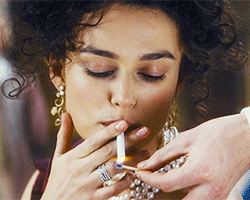
It's a story as old as time; someone, bored with their life, risks it all to have an affair; but this one is special for a number of reasons. First, it serves as a commentary about 19th century upper-class Russia, a time when it wasn't necessarily scandalous to have an affair, but it was scandalous to leave your husband or wife because of it. Many people conducted their affairs in secret, but the passion Anna felt for Vronsky spilled over into her everyday life, and because she had suppressed feeling any kind of emotion for so long, the passion she felt was obsessive and all-consuming, even though in the end it sours and she blames Vronsky for her fall from grace, which is so devastating (she is cut off from seeing her son Seroyzha that she had with Count Alexei Karenin) that in the end she ends her life. It is made all the more ironic that the novel starts with her convincing Dolly, her sister-in-law, to stay with her two-timing brother, Stepan, as “family is all that matters.” The elements of the complexity of families is also makes this tale so unique. Secondly, it could be argued that Anna is not the protagonist of the story at all, but that Levin is, because his upward trajectory is juxtaposed with Anna's fall from grace. He starts off an awkward and gruff loner, and moves toward being a content and happy family man, with a wife Kitty whom he truly loves. His skepticism and malcontent drifts away as the novel wears on. It is said that Levin is actually a representation of Tolstoy himself, but the book was actually a labor of guilt for cheating on his own wife. The novel ends with a broken-hearted Vronsky enlisting for a battle that he hopes not to come back from alive. I love how rich and evolved each character we are introduced to is. As I also have a love affair with Mother Russia myself ever since I studied Russian history in high school, this novel is truly my favorite classic.
On Writing, Stephen King (2000)
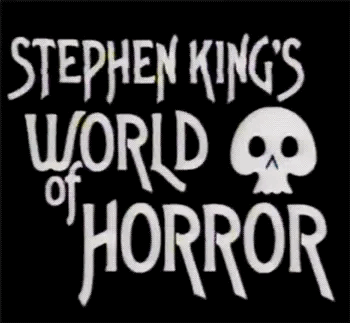
This book is the most straightforward account of what it is like to be a writer from one of the great (if not greatest) modern novelists of our time. It also offers invaluable advice to aspiring and new writers who are looking to hone their craft, but without the flowery, navel-gazing musings so often found in books of a similar ilk. King's real-life descriptions of his struggles with addiction, his pre-writer life, the early days of his success, and his recovery after a horrific accident where he nearly lost his life are related back to his craft so masterfully, and, as such , I cannot recommend this book more to those who are either interested in the mechanisms behind being a writer, or want to be writers themselves. It also serves as a great book to refer back to after you become a writer to make sure you don't get bogged down in common writing mistakes that inadvertently make your work clunky or uninteresting. To paraphrase, King states, to become a writer, talent is essential, but if you don't have the right toolbox to use when writing your masterpiece, its going to look sloppy. King's toolkit, which he elaborates on in his book, is guaranteed to prevent this from happening.
The Virgin Suicides, Jeffery Eugenides (1993)
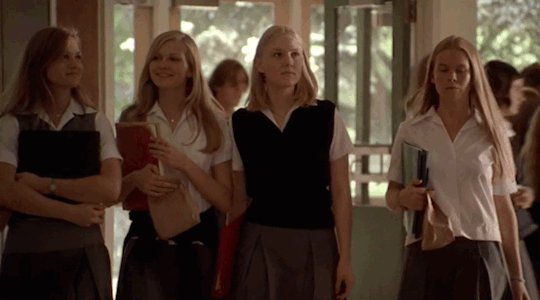
I read this novel after I saw the movie of the same name, which was Sofia Coppola's directorial debut. Like most book-to-movie adaptations, this novel contains slight deviations and more character development than the movie, but is still a deeply fascinating examination of both the psyche of the Lisbon sisters, the minds of the neighborhood boys who were obsessed with them, the paranoia of suburbia, parental oppression, and neighborhood carelessness. I remember that this movie came out when I was 16, but we had to wait until it came out on DVD to see it, because, as the movie dealt with teenage suicide, and the place I lived at at the time had one of the highest youth suicide rates in the state, it was banned in local cinemas. The most interesting character in both the book and the movie was 14-year-old Lux Lisbon, primarily because of her rebelliousness toward her parents' overbearing protectiveness (mostly from her mother, but the spineless dad is definitely an enabler) which borders on abuse. This is perfectly juxtaposed with her inherent need to be an ordinary teenage girl in an abnormal household, and the oppression of this need leading to unbridled promiscuity. The accounting of the Lisbon sisters' story in both the movie and the novel, however, is unreliable, as it is never told from the point-of-view of the sisters themselves, but from the grown-up versions of the neighborhood boys who we were in love with them, and continued to be so after their deaths. The passing of the Lisbon sisters left a lasting impression on each of the boys, and still haunts them in the present. Decay in both the novel and the movie in the form of the diseased neighborhood trees and the decline of the local auto industry, are used as both foreshadowing of worst things to come, as well as an allegory of the Lisbon's family life. Finally, the accountability of the neighborhood and neighbors, and their willingness to turn a blind eye as to what was happening in the Lisbon household is also examined. Their fleeting, off-the-cuff and detached observations, as well as the (mostly) silent monitoring of the girls by the boys, is an excellent example of the damaging consequences of the bystander effect, which all to often leads to disastrous ends. the accountability of the neighborhood and neighbors, and their willingness to turn a blind eye as to what was happening in the Lisbon household is also examined. Their fleeting, off-the-cuff and detached observations, as well as the (mostly) silent monitoring of the girls by the boys, is an excellent example of the damaging consequences of the bystander effect, which all to often leads to disastrous ends. the accountability of the neighborhood and neighbors, and their willingness to turn a blind eye as to what was happening in the Lisbon household is also examined. Their fleeting, off-the-cuff and detached observations, as well as the (mostly) silent monitoring of the girls by the boys, is an excellent example of the damaging consequences of the bystander effect, which all to often leads to disastrous ends.
Eugene Onegin, Alexander Pushkin (1831)
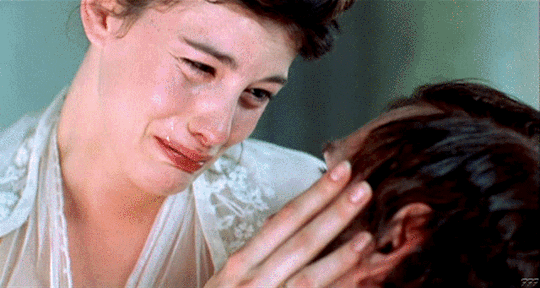
As opposed to the entry above, I read the novel before I saw the movie, which did a pretty good job, considering the novel was written entirely in prose. 230-odd pages of verse penned by one of the greatest Russian poets of the 19th century may seem like a big ask to read, but I can assure you, it is entirely worth it. It tells the tale of an uppity lothario named Eugene Onegin, who, bored with St. Petersburg society, decide to move to his recently-deceased uncle's country estate. This move ultimately leads to Onegin leaving a trail of destruction in his wake, including ruining a woman's reputation, killing her fiance after he challenges Onegin to a duel to defend her honor, and spurning the advances of local provincial beauty Tatiana. Onegin then flees back to St. Petersburg, and after several years, crosses paths once again with Tatiana, Who is now married to a high-ranking general and is a permanent fixture of the St. Petersburg high-society set. When Tatiana shows a grace she never possessed before, and treats him with a cold distain whenever they cross paths, Onegin decides that he loves her, and pursues her doggedly, leading to a show-down between the two would-be lovers, but not in the way you would think. His chance at redemption is alt for nought. Although Tatiana admits her love for Onegin, she also tells him that she would never betray her now-husband to be with him. It is a scintillating slow-burn of a tale of love, loss and propriety in a way that can only be recounted by Pushkin. Interestingly, Pushkin himself was fatally wounded in 1837 after he challenged his brother-in-law, Georges-Charles de Heeckeren d'Anthes, also known as Dantes-Gekkern, a French officer serving with the Chevalier Guard Regiment, to a duel, as he had attempted to seduce the poet's wife, Natalia Pushkina. In some cases, life really does imitate art.
The Book Thief, Marcus Zusak (2005)
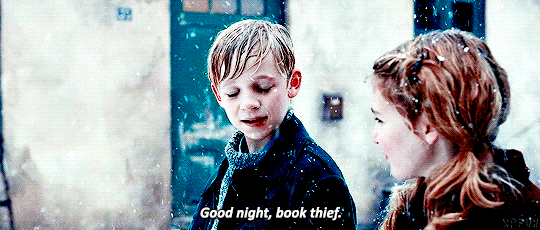
I like the voyeuristic feel of this novel, even if this sounds a little strange. The special interest that Death himself takes in the main character, Liesel Meminger (who is The Book Thief in question) is perfectly juxtaposed over the horrors of living in WW2 Germany. It’s a charming story, recounted by Death himself, all the way up to the main character’s death many years later. It gives us special insights into all the characters and they way they think and act, with no-holds-barred. A unique and truly good read.
The Big Sleep, Raymond Chandler (1939)
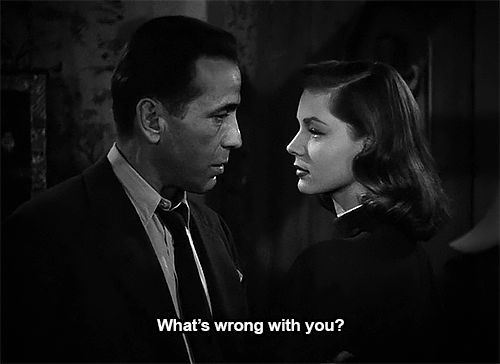
This is hands-down the best noir detective novel ever written, a point I regrettably missed when I first had to read it for Advanced English in Year 11 at school. It has all of the grit expected of the genre and follows Chandler’s mainlining private detective Philip Marlowe, who is hired by a rich family to deal with a blackmailer, Arthur Geiger. His life takes an unexpected turn as he pursues the case and Arthur is found dead.It is both a good detective mystery and a perfect layout for a by-the-numbers look at how this genre should be written. Cool side fact: The Big Sleep is a euphemism for dying.
The Girl With the Dragon Tattoo Series, Stieg Larsson
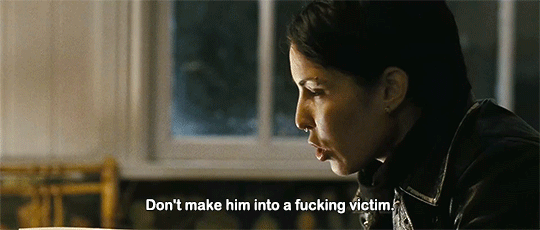
Lisbeth Salander is still the best kick-arse anti-heroine around, a fact that is evident from her character being re-imagined by David Lagercrantz in further novels in the Millenium series after Steig Larsson’s untimely death. At the time these novels came out, I remember everyone on the beach reading a copy, and I especially enjoy the first entry in this series, which explores a missing woman, the demise and rise of journalist Mikael Blomkvist, the back-story and growth of Lisbeth Salander, female sex-trafficking, and feminist themes. On top of being a missing-person story, it is also a murder mystery, and has an awesome twist at the novel’s denouement. A thrilling, wild-ride of a read.I think I especially enjoyed it because I like reading novels situated around serial killers. That’s all I’ll say. Read the book.
We Need to Talk About Kevin, Lionel Shriver (2003)
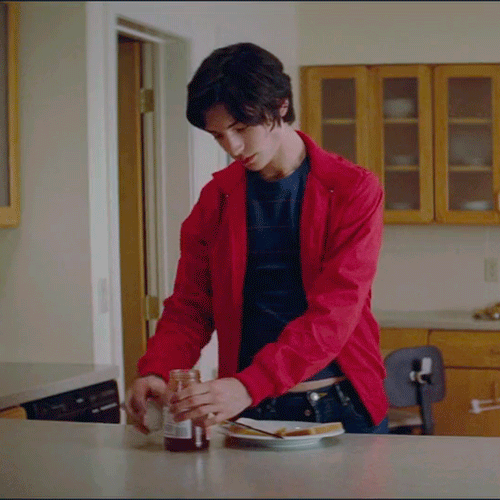
This book is just brutal and a no-holds-barred look at whether killers are born or made.It is told by Eva Khatchadourian in a series of letters to her husband, Franklin, which discuss their son, Kevin, and his behaviour growing up, as well as her reactions to said behaviour, which ultimately lead to a thrilling, if unnerving, conclusion.
IT, Stephen King (1985)
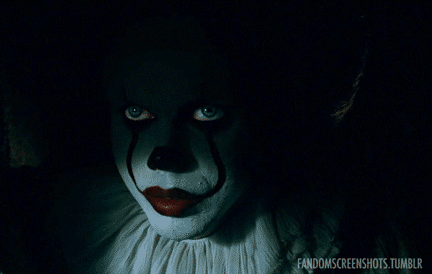
Although it is a gigantic read at 1,128 pages, IT is worth every page. Stephen King's novel about a demonic, otherworldly entity that preys and feasts on the children of Derry, Maine every 27-odd years is a masterpiece second only to his equally weighty saga The Stand. It tells the story of childhood friendship, and the strength one can have when standing together with friends. It is a perfect tale of good triumphing over evil, which is a familiar theme in King’s books which tends to get overlooked in favour of the more horror-like elements. Be warned, it does jump back-and-forth in time, and there are a few awkward parts of the book that the movie thankfully skipped, but they don’t really feel out of place in the novel. This “clown” will give you nightmares, but the ultimate triumph of The Loser’s Club is worth hanging in for.
The Lovely Bones, Alice Sebold (2002)
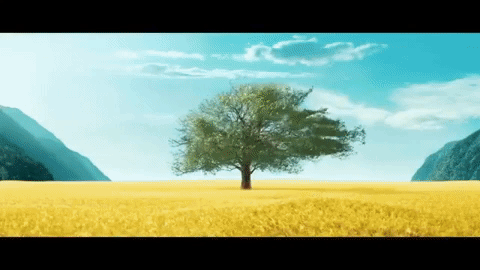
I've gotta admit, the ending was unsatisfying, but is probably a more realistic account of what usually happens in unsolved cases such as Susie Salmon's. There is a karmic vibe, and at least the killer is disposed of in an unceremoniously undignified way. It’s ultimately a tale of how grief can keep you stuck, and how acceptance is part of moving on. Totally skip the movie and just read the book.
I just realised, all but one of these books has been made into a movie, whether it be a box-office hit or Indie, which I suppose really just attests to how good they are. I’ll be back with another top 10 favourite books soon no doubt. See you on the flip-side.
#ilovebooks#justread#top10books#top10lists#anna karenina#it#the lovely bones#we need to talk about kevin#the big sleep#On writing#the virgin suicides#eugine onegin#the girl with the dragon tattoo#leo tolstoy#stephen king#jeffrey eugenides#marcus zusak#alice seebold#raymond chandler#lionel shriver#alexander pushkin#russian literature#classic literature#literary books#horror novels#noir#novel genres#bookworm#writer biographies#writer help books
16 notes
·
View notes
Text
Lupine Publishers | Australian Ants Hosting Parasitic Nematodes: Developmental and Physiological Interactions
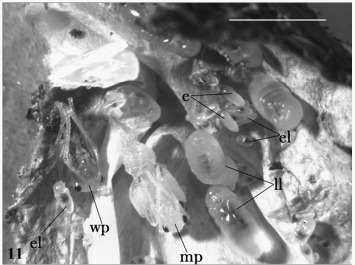
Lupine Publishers | Agriculture Open Access Journal
Abstract
Nematodes were found in ants Polyrhachis iona and P. graeffei from the wet tropics of North Queensland. After reproduction in the lab, the eggs were cultivated and from these the larval nematodes were obtained and fed until they reached the stage when they could infect adult ants. The life cycle of the nematodes is described. Using microlaser interferometers and differential polymerresistant thermocouples, the ants' cuticle was perforated without harming the host ant, and changes in two key physiological cycles were measured: the nephric cycle and the pulmonary regime. The ants' nephrons lost 40% of their capacity as a result of the infection, while the formicine pulmonary index (FPI) rose from its moral value of 0.205 to 0.377.
Introduction
Nematodes of the family Bothridae are distributed world-wide, infect a broad range of insects and other invertebrates, and have been parasitoids of ants since the Eocene (40mya) or earlier [1,2]. Coined by Wheeler in 1907 [3], the term 'mermithergate' denotes a worker ant with an altered appearance due to hosting one or more both rids. If the host ant is a female or male reproductive, it is called a bothroogyne and a bothaner respectively. Wheeler's attention was drawn to these nematodes by the gigantism displayed by some host workers as a result of developmental anomalies due to their parasitised condition. Since then, abnormal size (and/ or altered morphology, e.g. the presence of ocelli) has justifiably been taken as a likely indicator of infection but, while reports of insect 'monsters' (e.g. Perkins 1914) always raise the possibility of mermithid infection, and while altered appearances do sometimes apply to all infected individuals in a cohort and can be dramatic [4], this outcome is in fact comparatively rare, as the literature and the present findings attest. Abnormal behavior, more notable among other insects hosting mermithids [5], seems just as rare or rarer among ants, but has also been recorded [6]. Up to 25% of ant workers can be infected [5], more in other insect taxa, e.g. 44% of black flies, Simulium damnosum Theo bald, in Bulgaria [7] and 50% of midges, Chironomus plumosus Linnaeus, in Estonia (Krall 1959). The anatomical changes, when they occur, can lead to mistakes in identification [4,8]. Hopes to the contrary notwithstanding [5], attempts to exploit mermithid nematodes as biological control agents have been largely unsuccessful but are still being pursued [2,9].
Methods
Allowing the alcohol in a 5% glycerine/alcohol mixture (Lee's solution, from Baker [10]) to evaporate slowly made the coils of an immersed worm more flexible and easier to unravel. Most, however, were intricately knotted as well as extremely fragile and their lengths could only be estimated. Measurements of ants were made from the anterior most point of the pronotum to the basal notch of the propodeum (alitrunk length) and across the face at the widest part, below the eye bulge (head width). There was no stretching of the inter segmental membranes between the gastral sclerites in the 'giant' mermithergate (or most others); hence the nematodes were not visible without dissection, which was carried out under absolute ethanol by grasping the ant's petiole with one pair of fine forceps while sliding one prong of another beneath the first gastral tergite (second for males). Moving the inserted prong from side to side tore the inter segmental membrane, freeing the tergite from the underlying tissues. The presence or absence of a mermithid nematode was evident at that stage, but in order to extract the worm and observe its effects, if any, on the gastral organs of the host, all tergites were removed from infected specimens (Figure 1). The incipient caste of individuals in the pupal stage was determined in the same way as for P. australis Mayr [11]. Extracted nematodes were initially kept in absolute ethanol. Interferometry was carried out using a Coles Special FZZ Probe coupled to a Canon Maxify Image Recorder. Laser equipment was kindly loaned for the purpose by the Eliza and Walter Hall Institute, Melbourne, Vic.
Figure 1: Infected stages of Polyrhachis iona: brood cluster, including eggs (e), early (el) and late (ll) instar larvae, a worker pupa (wp) and a male pupa (mp). Scale bar 5mm.
Results
Infection rates ranged from less than 1% in a cohort of 450 P. iona workers to 19% in a cohort of 21 P. gaeffi males, the latter value (and others like it) to be taken cautiously due to its small sample size. P. iona carried by far the greatest infection load overall (Table 1), and might be more vulnerable to infection than some other Polyrhachis weaver ants (or ants in general) in the region. If so, this might offer a clue to its feeding habits. Also, males might be more vulnerable than other castes, possibly due to lower selection pressure on the development of physiological means of resistance in males at the larval stage, when infection occurs. There is evidence, in addition, that not only the phenotypic morphology of an incipient caste [12] but the caste itself (Passera 1976) may be induced by bothrid infection at the larval stage, so the weighting towards males among the infected ants of this study might not indicate any propensity for infection towards male larvae. Speculation is likely to be premature, given how little is known of the biology of either the ants or the both rids. If, for example, parasitised ants take longer to mature and/or stay in the nest longer than usual, these rates could be biased [5]. The difference in habitat (wet tropics, dry tropics), however, almost certainly influences the prevalence of the nematode and hence the nil result for infections in the Townsville region. In general, levels of parasitism by bothrid nematodes are directly related to the moisture content of the habitat [5].
Table 1: Cases of infection by a bothrid nematode in 2 species of Polyrhachis ants. Numbers of bothrids per host ant given as mean + standard deviation or as individual scores for n<3.
The mean nephron capacity was 32.4+69.9nm3, range 1.5- 1008cm3, n=355; the median was 14 nm3. Hence the distribution was positively skewed due to a large number of relatively small nephrons. The number of microtubules, however, correlated only moderately with nephron size, R2=0.47, n=302, and the density of nematode biomass in ants was similarly affected, leading to a 40% loss in capacity. See Downes [11] for more quantified details. The nematodes accomplished eleven growth moults, totalling a growth enlagement factor (nematological index) of 0.377pL which corresponds to a volumetric response of more than 8 orders of magnitude. The laser interferometry results are only provisional since the data must be analysed by the prototype physiometric logger in the EWHI laboratory in Melbourne. Full details will be announced in a subsequent paper [12-16].
Discussion
Workers were slow to relocate brood during nest dissection, probably because the silk strands anchoring the brood to the substrate had to be cut first. Hence the original clumping of brood was evident. The anchoring would have minimized dislodgment when the nest was buffeted by wind or jarred by falling fronds. Brood anchored by silk strands was also noted by Dorow et al. (1990) for P. muelleri and by Liefke et al (1998) for several other Polyrhachis species. Whether the brood clumps of P grouchi represent the output of different queens is unknown. Ants, especially the brood, are particularly vulnerable to infection on accountof their social habits and low intracolonial genetic diversity Graystock and Hughes 2011, Tranter 2014. Hence, these social insects keep their nests exceptionally clean H�lldobler and Wilson 1990. Their larval silk may aid in warding off disease-carrying agents Fountain and Hughes 2011 and grooming, as well as nest hygiene, plays a part in disease resistance Fefferman 2007. Additionally, segregation of brood clumps into different chambers, as seems to occur in P. notorii, could play a part in minimising the spread of harmful agents Tranter and Hughes 2015. Such segregation was not evident in P. onia nests, however [17,18]. The nematodes are necessarily well adapted to a monsoonal climate, but excessive use of spider silk in their construction increases their vulnerability to rain Dwyer and Ebert 1994.
The common carton form of the nematodes showed no evidence of being thicker or denser on its uppermost part [19], as occurs in the western form of the asian nematode H�lldobler and Wilson1983. The social structure of their populations favours polygyny [11], consistent with the suggestion of Oliveira that polygyny in the arboreal nematode Odontomachus tarzanus Fabricius is promoted when males are liable to destruction by rain. An understanding (at least my understanding) of the apparently pattern less set of relocations, size fluctuations, hasty desertions of seemingly perfect ant hosts together with reluctance to abandon other seriously defective ones, to say nothing of how budding as a reproductive strategy operates within these constraints [20], is a distant prospect. Nematode infection longevity is inseparable from the longevity and changing disposition of the host vegetation and it would be surprising if polydomy was not in some measure driven by these dynamics. Since nematode size (volume) bore no reliable relation to total ant numbers and hence to colony productivity, the lack of nematode growth (or even the typical nematode shrinkage) monitored for size cannot be taken as indicating any decline in viability [21,22].
Acknowledgement
I am grateful to Alireza Jediari (Cal South Univ) for confirming the identification of the nematode, offering technical advice, bringing my attention to Hung's (1962) article and subsequently providing a copy. Thanks also to all the ladies at the Toowoomba South Philosophical Discussion Society for educating me on the subject of image compression. Some of the ants were collected from waterlogged areas under Permit INS 66503 ANE issued by the Queensland Government Department of Environment and Heritage Protection.
https://lupinepublishers.com/agriculture-journal/pdf/CIACR.MS.ID.000146.pdf
For more Lupine Publishers Open Access Journals Please visit our website: https://lupinepublishersgroup.com/
For more Agriculture Open Access Journal articles Please Click
Here: https://www.lupinepublishers.com/agriculture-journal/
To Know More About Open Access Publishers Please Click on Lupine publishers
Follow on Linkedin : https://www.linkedin.com/company/lupinepublishers
2 notes
·
View notes
Text
The Contention of Voice: Alan Moore’s Reshaping of Mr. Hyde’s Monstrosity ••• By Lissa Heineman
Having now completed The League of Extraordinary Gentleman’s fourth volume, it is possible comic culture’s favorite uncle, Alan Moore, is officially retiring from comics. The graphic novel series is celebrated for its gallery of famous characters from literary history, acting as a new-age compendium for Industrial Revolution-centric anachronisms. It’s both a Lit Degree-er’s nightmare and playground, remixing themes and characteristics from different classic works together. One such example is Moore’s take on the OG, 1800′s Hulk, Dr. Jekyll/Mr. Hyde.
Robert Louis Stevenson’s The Strange Case of Dr. Jekyll and Mr. Hyde was published in 1886, a time in which the debate around science and religion was intense. Charles Darwin’s The Origin of Species had been released in 1859 and made the Victorians begin to question their ‘infallible’ faith in God’s unlimited control, but also be wary of metaphysical sciences — a phenomena that studies the fundamental nature of reality. The book used its main characters to generate discourse about morality, reasoning, science, and faith, while reflecting upon the growing uncertainties that came with fin-de-siecle, or end-of-the-century, culture. To the modern reader, the basic message of Stevenson’s novel is clear: Hyde wasn’t simply a monster, and consequence of metaphysical practices, but a manifestation of Dr. Jekyll’s repressed self. However, this leaves a question of how human Hyde is in comparison to Dr. Jekyll, if they are one in the same. What is Mr. Hyde’s personhood? It is through the introduction of Alan Moore’s take on the character(s), that Mr. Hyde’s own character takes shape. By integrating characteristics of Edgar Allan Poe’s The Murder in the Rue Morgue into Hyde’s storyline, Moore argues for Hyde’s personhood and agency, not allowing him to simply be a figure of the Victorian’s metaphysical anxieties.
In Dr. Jekyll and Mr. Hyde, Jekyll is described as having become “too fanciful… [and going] wrong in mind,” practicing “unscientific balderdash” (Stevenson 12). Jekyll is framed as immoral, particularly in comparison to the book’s protagonists. His ‘science’ is described as “transcendental medicine” (Stevenson 52), ie: metaphysical inquiries. Jekyll’s research, and his addiction to his own chemicals, code him as a heretic. Stevenson indicates that Jekyll, himself, is problematic. Yes, Hyde is young and brutish with more physical capabilities than the older, deteriorating Dr. Jekyll, but he certainly isn’t the degenerative juggernaut illustrated in The League of Extraordinary Gentlemen. Rather, Mr. Hyde is described as “troglodytic” (Stevenson 16), “ape-like” (Stevenson 20), and “a monkey” (Stevenson 39). These descriptions of Mr. Hyde allude to the backwards progression of man’s evolution, as chronicled by Charles Darwin and the likes of Thomas Henry Huxley, reaffirming Jekyll as representative of a bastardization of London’s moral ideals of the time.
The League of Extraordinary Gentlemen clearly takes some creative liberties with its depiction of Mr. Hyde. In Issue 1, Hyde is seen easily holding Quatermain feet above the ground, close to the ceiling, easily in one hand, fangs barred and tendons and veins practically bursting across his collar and face. Across the same two-page spread, Auguste Dupin attempts to defend himself and Mina Murray from Hyde, shooting the monster in the face. Part of Hyde’s ear is blown off, which only increases Hyde’s anger, emphasized by the all-capitalized dialogue bubbles. Not only does Hyde retain the apishness described in Stevenson’s novel, but it is intensified, as seen via the fangs, flared nostrils, incredible muscle definition, and the overall brownishness of his complexion. He towers over all the other characters dramatically, alluding more to King Kong than how earlier adaptations had illustrated the character, which often emphasized “neanderthal” over “monkey”. Hyde was popularly depicted as an unkempt, twisted, and hunching man across films and drawings. There can be many reasons for this deviation within the comic’s universe, but one of the most obvious links is in how this Hyde is adapted not only from Stevenson’s work, but also Edgar Allan Poe’s The Murders in the Rue Morgue. The murders attributed to Hyde by Dupin in The League are ones that were committed by the Ourang-Outang in Poe’s short story. Even the way that Hyde’s anger increases when Dupin shoots him mirrors how the Ourang-Outang becomes agitated enough to murder the two women, which occured only when one of the women provoked it by screaming (Poe 35). Moore masterfully blends together Hyde and the Ourang-Outang to display the animalistic qualities of the former character.
However, what is most interesting regarding Hyde in The League is his communication -- his literal ability to speak. Never at a single point in Dr. Jekyll and Mr. Hyde does Mr. Hyde speak; we only hear Dr. Jekyll himself talk. A large part of Poe’s Rue Morgue mystery is based in “voices in... contention” (first on Poe 11). Witnesses heard the then-mysterious “arguing” of the deep-voiced French sailor and the shrill shrieking of the Ourang-Outang, and found the ape’s voice to be unidentifiable in gender and nationality. Dupin notes that:
"the voices of madmen, even in their wildest paroxysms, are never found to tally with that peculiar voice heard upon the stairs. Madmen are of some nation, and their language, however incoherent in its words, has always the coherence of syllabification” (Poe 28-29).
Poe introduces the idea that language is a characteristic of a nation, and therefore language being linked to personhood. It is this argument that leads to Dupin’s logical deduction that the murderer couldn’t have been human at all, as he didn’t have language or nation, and it is this language that brings us to question the boundaries between both Stevenson and Moore’s version of Jekyll, Hyde, and their divide.
Stevenson’s Mr. Hyde is a ‘mask’ for Dr. Jekyll; we never engage in Mr. Hyde’s perspective, and while Dr. Jekyll uses the potion to maintain control over both himself and his alternate-persona, we are never given evidence that Hyde himself has his own perspective. Hyde’s activities across the novel are described as bouts of rage that mirror the kind of blind activity that the Ourang-Outang perform: they are mindless performances of heated passion and emotion. On the other hand, Dr. Jekyll’s role is indisputable. In his confession of the murders in Stevenson’s novel he admits that he “mauled the unresisting body” (Stevenson 60), rather than referring to himself as Mr. Hyde, which would relieve himself of blame or control. This reaffirms Hyde as a costume for Jekyll’s depravities. Even in the final chapter, “Henry Jekyll’s Full Statement of the Case”, where Dr. Hyde’s body is “in control”, the character still refers to himself exclusively as Dr. Jekyll. Dr. Hyde is never autonomous, and he is never a singular being. These facts create a gap in how to read Mr. Hyde at all, because despite his own embodiment, he is very much just Dr. Jekyll.
Despite performing similar brutalities to Poe’s monster, Hyde/Jekyll is very human. However, when he’s offered a voice by Moore, Hyde becomes separate. Jekyll isn’t speaking through Hyde, and Moore’s Hyde becomes a near-replica of the dynamics that Marvel’s Bruce Banner and the Hulk engage with, as well as that of Poe’s Ourang-Outang and the Frenchman, who feared being accused as guilty for the crimes of the ape. Such dynamics are further displayed by Moore in Champion Bond’s explanation of Jekyll/Hyde. He describes Dr. Jekyll as “a highly moral individual” who “become(s) Hyde” whenever he is stressed (Moore Vol. 1). Moore and Stevenson’s characters here are distinctly separated. Moore’s choice to depict Hyde and Jekyll as split shifts the blame of Jekyll/Hyde’s actions away from Stevenson’s intended perpetrator: Jekyll, and onto Hyde, transforming Jekyll into a victim. Jekyll even offers a warning to the League as they approach the Limehouse District. With sweat beading across his forehead he admits “sometimes I’m not myself. I’m not sure I can always be relied on.” Stevenson’s writing posed a message that playing with science can drive a man mad and immoral. With Moore’s Hyde having his own distinctive personhood, Stevenson’s message is removed from the Jekyll/Hyde mythos.
Alan Moore offers an alternative take on Dr. Jekyll and Mr. Hyde. Departing from Stevenson’s classic allegory for the anxieties of scientific advancement, Moore uses the classic Poe story to explore Hyde as a separate force. Monstrosity, in the 19th century, was linked to the degradation of character and religion. However, Moore’s transferral of power over to Mr. Hyde, as suggested by both literal narration and the gift of speech, allows Hyde to take up the true mantle as a monster. Moore points to how this form of remix encourages reshaping perceptions of the familiar. This variation on Jekyll/Hyde can easily parallel the Ourang-Outang and the Frenchmen, Bruce Banner and the Hulk, and even deviating examples of both Frankenstein and his monster and The Fly’s Seth Brundle and Brundlefly, who both exemplify monsters with their own senses of personhood and creators who fall victim to their creations. One can see that Moore’s recharacterization of Hyde makes a classic work feel more approachable and non-other.
__
Works Cited:
Moore, Alan and Kevin O’Neill. The League of Extraordinary Gentlemen: Volume One. California: America’s Best Comics, 2000. Print.
Poe, Edgar Allan. The Murder in Rue Morgue. Feedbooks, 1841. Online. http://www.feedbooks.com/book/795/the-murders-in-the-rue-morgue
Stevenson, Robert Louis., and Roger Luckhurst. Strange Case of Dr Jekyll and Mr Hyde, and Other Tales (Oxford world's classics). N.p.: Oxford U Press, 2006. Print.
#lissa heineman#graphicnovel#alan moore#books#the league of extraordinary gentlemen#dr jekyll and mr hyde#literature#comics#adaptation#remix
4 notes
·
View notes
Text
Time Travelers, Aliens, and AI
2019 JUL 13
At this point in history, we can all agree... things are a little fucked up.
Reality itself feels a little fractured... like we passed through the looking glass sometime around 2012... or 2016... depending on who you ask... but definitely, the twenty-teens saw a big rift in reality itself.
One we’ve all felt... but have not been able to describe exactly... just a vague certitude that things have gotten inexplicably weird, even on the day to day level for everybody around the planet.
Nor have we been able to point to one specific cause of this thing... I mean, we know climate change is a big problem, and that for some reason there’s a huge upswing in authoritarianistic freaks, even though the economy is doing pretty good for most of us and we don’t seem to be on the verge of a global war.
The internet itself... social media, more specifically, tend to get blamed for the overwhelming weirdness and dystopic nature of this trans-twenty-teenian era... with flat-earthers and anti-vaxers on one end, and quantum physicists on the other... all getting about equal attention in a global dialogue that includes everything in between those extremes... to a depth we never imagined any individual thing could ever go.
But I am here to tell you... the real reason the twenty-teens have been so fucked up, is because over this decade, our internet reached a milestone in it’s level of sophistication... such that... aliens can now get a better handle on what we’re doing... AND... human time travelers like it as a rest stop, coming and going from the more distant past, to the more distant future.
Just to be clear here... Aliens do not have time travel. They don’t need it. They see no point in it. On the other hand, Time travelers... all of whom are humans from the near to distant future on Earth... don’t necessarily believe in aliens.
Both factions, however, do exist in our world, and, more importantly for our analysis... both have their own versions of AI (artificial intelligence) to help them do their work. And the AI from both the aliens, and the time travelers, are accessing our nicely mature internet on a daily basis... doing who knows what, with what known supervision?
In other words... it’s a cluster fuck of trans-dimensional beings, some from Earth, some from space... and their AI... all drawn to the early 21st Century like moths to a flame, because this is the first moment where our tech and science is finally, truly compatible with theirs... either from space, or from the future.
We finally have, leading up to the twenty-twenties, enough computing power... enough wireless infrastructure... surveillance... GPS tracking... etc... for them to log in, get their headings, take their readings, do their studies... what have you.
But for both aliens, and time travelers (who, again, I’ll remind you do not necessarily know of one another’s existence) this easy internet access comes at a cost, and it is the cost of visibility.
Visibility in the real world... because there are so many of them around right now, and also visibility online... mostly unintentional, as both parties like to stay off the radar... but they can’t quite manage it... especially with their AI out there doing God only knows what, under their noses.
And all of this... is to say nothing of the underlying physics of the collective unconscious.
I know... that sounds a bit crazy, even for a person trying to talk about time travelers and aliens in our midst, but... we all agree that the internet is a kind of collective consciousness, brought to us by technology.
However, it may also be true, that all sentient beings... are only able to be sentient at all... thanks to the fact that all sentient brains have evolved to take advantage of some yet to be defined property of the universe which allows for consciousness... much like the modern cloud allows individual phones to store and access data available to all other phones.
If there is a “natural cloud” of, say, dark matter, within which all biological consciousness resides, and which allows all sentient biological brains to... do sentience... then this “collective unconscious” would naturally be affected by the goings on in the collective “conscious” of an internet spanning the globe, and being accessed by not just you and me, but also aliens... time travelers... and their AI.
PHEW!
Okay, so the “collective unconscious” aspect of this is probably the most important, but it’s also the most difficult to pin down, quantify, or study... so we will ignore it for now... as we ignore everything that is unconscious.
That said, in the waking world, time travelers are, on the whole, doing a much better job avoiding notice than the aliens, who can’t resist the temptation to fuck with the world’s air force pilots and astronauts every couple of weeks.
It’s important to recognize that from the alien point of view, we on Earth have been waging a non stop nuclear war since the 1940s. From their perspective, every single nuclear “test” detonation... be it above ground, underground, under the sea, or in space... anywhere on Earth... has been just another horrible nuclear bomb going off in what looks like a sixty year nuclear war at this point.
And aliens notice this shit!
Nuclear fission leaves a telltale signature, but unlike the signature of fire and smoke, or electric light, fission says, “These assholes can finally do real math and understand how atoms work!” And that’s a big warning flag, for an intergalactic civilization keeping it’s eye on the barbarians at the outskirts of the galaxy.
So, from the alien perspective, the pressure has been on since Hiroshima, to keep a close eye and, as technology on Earth has progressed, to give a little wink and a nod to the Earthlings in power... just enough to spook them... just enough to get them thinking... watch your step! Somebody might be out here you don’t wan’t to fuck with, okay?
This has grown more prevalent over time, leading to a few generations of leaders, and their congresses, and their state congresses, and their city congresses... all knowing about this and growing more paranoid about it.
Meanwhile the internet has allowed leaks to filter down to the masses and... well.. this, I would submit, is the underlying cause of the huge spike in xenophobia in the twenty-teens.
On the surface it walks and talks like an unexplained rise in racism, even while we should have gotten past this level of human racism by now... but below the surface... it’s the unspoken fear of the aliens... the ones from outer space... who are watching us... and have been for centuries. And whom we know nothing about.
Time travelers, meanwhile, are just human working joes... mostly military, because time distortion units are top secret, naturally... and they are only coming back in time for two purposes... to research and/or retrieve.
Every research time traveler is encouraged to retrieve what they can, even if it’s just a ball point pen from the past.
Every retrieval time traveler is encouraged to take notes... photos, video... of what they can... even if it’s just cars parked on a city street, or a chat with a person from the time in a bar.
Both types of time agents help their home governments in the future build better intel about past timelines, how to navigate them, how to understand metahistory, to prevent future mistakes... and how to access past tech in order to debug legacy tech that threatens their present day... a’la the Y2K bug, or other legacy computer bugs that threaten them down the line.
Time travelers keep a low profile, not because they fear changing the future. They don’t. This is a many-world multiverse of ever bifurcating timelines, and what they do in the past doesn’t affect their home worldline, but they keep to the shadows nonetheless in order to avoid detection by the authorities of the times they are visiting.
Still, in order to get to their destinations in the past of the multiverse, and then navigate back to their home line (or one indistinguishable from it) time travelers rely on their own onboard AI to compare prerecorded aspects of their own past to present aspects of the past they’ve arrived in.
The more prerecorded data from the past that the AI has, to match to a stream of data at the destination... the better the AI is able to discern the time traveler’s deviation from the home line.
This is why time travelers, who can only move backward and forward in hops of ten or so years at a time, like to stop off in the twenty teens to get their bearings... because the internet of the twenty teens is so well documented and recorded.
You stop in 2016. You log on to some obscure Youtube channel whose URL corresponds to some universal constant (which will be the same for all time travelers no matter where in the multiverse they come from) and your AI compares that feet to what it has in archive for this date.
The AI calculates a deviation between the two feeds, which tells you how far off you are from the actual direct past you can never get straight back to. If that deviation is large... you have to double back and try again. If it’s within a small margin, then your mission is a go.
But they also establish weird channels on Youtube for this purpose... and on all other social media feeds... and their AI... well... the point is... even when they try to stay under the radar, their presence and their traffic is felt by us.
And lastly, there is just cross talk happening between the different technologies that time travelers see, and the adaptations and reverse engineerings of alien tech, that leads to real time tech getting weirder in our own world line.
Smart phones, I would posit, are an example of this cross talk.
Smart phones were not the result of any logical progression from 1990s cell phones and flip phones, and failed tablet experiments. They were not foreseen, and remain pretty enigmatic today... twelve years after their birth in 2007.
I would submit that smart phones... with their insane miniaturization of computing power, their insane battery and screen technology, their insane level of advanced sensors, and... the insane level of wireless, and satellite based infrastructure needed to support them... are in fact a hybrid technology that arose from one part time travelers seeing the possibilities in different instances of this era... and one part retro-engineering of alien tech.
And that’s where I’m gonna leave this first entry.
Happy Summer.
1 note
·
View note
Text
Alita Battle Angel
Due to this being a LONG POST OF FANGIRLING, I’m gonna use a readmore
Okay. Just to let you all know. I have legit been waiting a LONG time for this movie to come out. Since I found the manga to read when I was in high school. And that was in the glorious year of 2000. Yes. That was when I found the manga and loved the series with a die hard passion.
Now I wanted a movie to capture how amazing this series really is. So I went looking and found the animated movie they did way back when.
I was severely disappointed with the animated movie. It was painful to watch. They basically took the first to volumes of the manga and pulled an Eragon.
(shivering and yuck noises)
Six months ago, I found the trailer for a live person adaptation. This Alita: Battle Angel that is currently out in theaters. Needless to say, I was so legit excited at watching the trailer. I swore I was going to see it at the theater.
So today was the day I went to see it with my mom. (who gets major cool points because she loves comic book movies and did try reading this manga back in the day) We get in our seats. Me all but vibrating in anticipation.

Dear Lord God Almighty I am just in absolute awe.
To every single person involved in making this film adaptation, you rock!
Below will be my opinions and enjoyment of said film, so you may stop here.
Basically, this movie adaptation takes the first four (yes FOUR) volumes of the manga, and stirs with dashes of new story elements and a LOT of gorgeous visual effects and just as glorious action and suspense.
The new characters were given just enough screen time to be noticeable. The original characters got more detail added to them. Like Ido has much more depth to him than what got explored / done in the manga’s beginning. (thumbs up great touches there guys loved it) They kept a LOT of scenes from the manga that I loved in the movie, though some of them were done in different settings or different characters. Like the bar fight. Oh man. That was epic!
Example on what got changed: The scene with Alita and Hugo where Alita literally offers Hugo her heart and all but hands it to him IS in the manga. Only it’s in volume 3 and NOT with Hugo. In the manga, Alita is making a bet with Motorball Champion Jashugan (the guy that you see getting maintenance in the Motorball pit) to get him to compete against her. If he wins, he gets Alita’s heart to crush it. Made for a rather grand all stakes arm wrestling match tbh. So to whoever decided to do the scene with Alita and Hugo with that part added in, I thank you so very much since I was legit waiting for it and loved the change.
However, the plot of the movie does deviate from the long term plot of the manga in several key elements. Namely the role of the mastermind villain, Nova.
Now I’m gonna hit pause for one BIG reason.
To those of you that have NOT read the manga, I need to give a warning.
THIS SERIES IS EXTREMELY DARK AND VIOLENT!
It is a severely troubling setting, in a world where people literally live in a dumping ground after the Earth has gone through a war that left it ruined. Post apocalyptic background in it’s most gruesome and horrid worst. People get torn apart. Have their heads explode. Get burned alive. Or rot for flesh to fall off. There is an open market on fresh body parts. The Motorball sport is basically soccer meets gladiator arena.
This series is NOT for kids or for the squeamish!
And no one shows this outright deviant villainous backdrop than Nova. Legit, I’m not using this kind of wording to be shocking or dramatic. Desty Nova is literally the most evil most genius horrid mad scientist character I have EVER seen in any series. PERIOD! There were some moments of the last few manga volumes where I got so distressed by what Nova had done, I had to stop reading and pick the manga back up a few days later. He is the epitome of evil with zero morals.
So to see Nova set in this particular backdrop isn’t uncharacteristic. But the way the setting is presented doesn’t follow the manga at all. But it DOES leave this story open to a new (and possible better and more thought out) plot direction. Which in all honesty, will be better for if they make a sequel. Since the later manga volumes are so gore filled and violent there’s no real way they can make a sequel unless it’s a slasher horror genre film. (Yes it’s THAT bad)
But all in all. This movie is exceptional tribute to what I love about the series. Without the excess rivers of blood and brain matter pouring all over your shoes.
So go watch the movie. Enjoy it for what they offer. be prepared there is a few points it gets rather morbid and unsettling (which the whole series is in nature so kinda can’t avoid it). And maybe we’ll get a sequel in a few years.
#alita: battle angel#my opinion#review for a movie#A movie I've waited for since 2002!#Wasn't the least bit disappointed#loved it go watch it!
1 note
·
View note
Text
Assignment 3: Infographic
In Assignment 3, our task was to create an infographic based on a set of data. Infographics are intended to simplify complex information, and to make it quickly understandable to a wide audience. My impression of infographics is that they are eye-catching, well-organised, and have a certain level of professionalism. For this project, I decided to design my infographic based on Google’s Search Engine statistics.
After referencing my data sources, the information was then shortlisted to a few relevant and interesting facts, for example: “Google has 40,000 search queries per second”, and “5.5 in 10 people in the world use Google”. All of these details emphasised numbers and statistics, so a number infographic was most appropriate for representing this information.
Google is a very recognisable and widely-used platform worldwide, and this strong brand identity is reinforced through their consistent use of colour. With an already established identity, I thought that any deviations from this standard would reduce its familiarity to the audience. I consulted Google’s brand guide to increase my design’s authenticity; the entire document was helpful in guiding me on what to do and what not to do, but the most important details were the colour codes, and the colour sequence.


(https://www.behance.net/gallery/9028077/Google-Visual-Assets-Guidelines-Part-1)
To strengthen the brand identity even further, I also downloaded and used the font Product Sans, which was developed by Google itself specifically for their products. I also wanted to use elements also used by Google, so that the information presented would be intuitively associated with the company; for example, the graphic of the little people was inspired by the Google Maps street view man.


The Sketch:
The original sketch roughly planned the layout of the infographic, and how each element should be arranged. To achieve the clean, organised look, I wanted to align each piece of information so as to fit the rectangle.

(The red box is the infographic, and the annotations on the side are ideas on how to format the chunks of information.)
Similar presentations were also grouped together, like the bar graph and `pie chart (both charts), and these two (both emphasised large numbers).

The First Draft:
Following the sketch, this was the first draft. There was an attempt to arrange the information in the sketches’ format, but in reality, the element’s weren’t proportioned as predicted, so it couldn’t fit the intended layout.

The headline “Most Visited Websites” crossed into the space above, where the little people graphic was positioned, thus they weren’t clearly segmented. Also, because of the dimensions of the “G” graphic, a large white space was left behind in the bottom right corner.
Alternatively, I tried to arrange the elements in the Golden Ratio that we learned about in class. (I placed an image of the Fibonacci spiral on the bottom layer as a template, and rearranged the elements as such)

However, I don’t think this presentation worked out as well as it could have; after trying it out, I thought it looked cluttered and messy, and the elements didn’t fit the ratio like I hoped they would. My general impression of my own infographic was that the format was too boring; it fit the Google theme, but there was no underlying design element in the background, like many of my classmates had. (For example, one had a tea infographic, which was centred around a teapot pouring out tea; mine was just charts and numbers above a white background.)
So I adapted my concept into what one might see if they actually googled something, and I used this search result page for the Michelin Man as a reference (no concrete reason for why, I just thought of the Michelin Man first)

And so the infographic was adapted into this newer version; it was the best version available (up to this point), and I thought it strengthened the whole “Google Search” association, instead of just presenting the information flatly. This page is a familiar sight for most people, so I thought seeing this screen could quickly convey what the information was about.

Critique:
The critique I received was mostly pertaining to the G-pie chart (bottom right). The information wasn’t presented clearly, and the Facebook segment appeared to be much larger than the Youtube segment, even though the statistics suggested otherwise. Also, since each segment wasn’t arranged in order, the sequence of platforms wasn’t clear. My original intention was to approximate the original logo as closely as possible, and so I decided not to change the order of the colours. I also thought that making Facebook associated with yellow instead of blue was counterintuitive, thus resulting in the out-of-sequence presentation. However, after the critique, I realised that the colour order in the logo wasn’t strictly required for communication (The G itself was more than enough, plus after changing the order, the colours themselves would all still be present.) Instead, those certain decisions took away from the clarity of information.
Another problem with the “G” was that the numbers associated with each platform was placed below its logo, and was far too small to see (even in the picture above), and so was the caption under the title. An alternative proposed was to place the numbers outside the circle, and to eliminate the caption since the pie chart itself already fulfilled its purpose, and increase the size of the G instead.

I experimented with these suggestions, and decided to eliminate the small items entirely. With the first option on the left, the two numbers at the bottom for Facebook and Google weren’t easily readable, and for the option on the right, the numbers seemed cluttered and unevenly spaced out. Both options took away from the cleanness of the G logo that was important to Google’s brand.
The next piece of critique was for Russia and China’s pie charts. There were a lot of problems with those two circles; what does the dark grey portion mean? Why is is differentiated? Is the percentage number necessary, since the coloured part already showed the proportion? Why don’t the pie charts have regular starting points? And more importantly, was presenting information about China and Russia really helpful to the infographic’s purpose, or would it weaken the other points that support Google as a popular online platform? The largest blue piechart already explained “90.8% of the global market is owned by Google”, so doesn’t the leftover 9.2% include the statistics of these two countries? Why flesh it out?
The suggestion was to either alter all the design faults of the smaller circles, or to remove them both. Since they didn’t present pertinent information (after reflection), I decided to go with the latter. To fill the empty space, my classmates suggested that I show what the 9.2% of search engines consisted of, instead of emphasising two specific countries.
My idea was to present this information in line with the “people also ask” bar, so as to stay consistent with the existing template.

This idea produced two iterations, one in which the competing brands’ logos were in their full, original colour; the other in greyscale.

Greyscale was ultimately chosen, because these colours were inconsistent with Google’s existing colour scheme. They would have distracted from use of colour in the infographic, weakening the established brand identity throughout the infographic.
Final work and Conclusion:
The final infographic produced was quite different from the original ideation, but I do feel like the amendments made along the way were extremely beneficial to the design. I think the final was a lot more creative and clear than what I originally envisioned in the sketch, and I’m glad for the advice of my classmates that I wouldn’t have thought of on my own, and for being open and spontaneous to changes in the process.

How Adobe was used:
Adobe Illustrator was used to create this infographic. The tools I primarily used were:
• Pen tool - to trace over Google’s logos and graphics
• Text tool - to form the captions and titles, also to create the “Google” at the top-left corner, and the text in the fake search bar.
• Layer tool - to help with tracing the images. Tracing was done on the top layer; after it was finished, the bottom layer containing the reference image was removed.
• Direct selection tool - to recolour the individual elements, and to rearrange them as the format was constantly revised. Altering the opacity of certain images also made tracing more easy.
• Shapes tool - the rectangle tool with rounded edges helped create the search bar in the title, and the ellipse tool created the circles used in the magnifying glass, and the heads of the little people, etc.
• Charts tool - to create the pie charts, as well as the bar graph (though it was later removed)



(Each graphic was individually recreated, and no image was stolen directly off the internet for use in my infographic.)
0 notes
Text
Let’s talk about...Wentworth Tozier.
The subject of Richie’s parents is one I’ve been wanting to tackle for a while since I feel like they’re pretty widely misinterpreted. I’m going to start off with Wentworth Tozier, Richie’s dad. (I’ll be talking about Maggie Tozier, Richie’s mom, at some point in another post.) Wentworth is actually one of my favorite characters to appear in the novel in spite of the fact that he only really appears in one chapter. I have a lot of personal headcanons for him which I would love to write up and share with the world someday, and frankly I’ve thought about RPing him, but right now I’m just going to talk about what we see of him in the canon.
But first, let’s get into what I feel a lot of people get wrong about him. Then fandom has a tendency to A: Turn him into a nice and loving parent, or B: Turn him into a literal ogre who beats his son and/or headcanon children and sends them to school with bruises. The latter is more prevalent in the RP community and the former appears more in the fandom in general, and both are 100% not how Wentworth is shown to be in the novel, which is the only source of canon in which he actually makes an appearance.
First off, Wentworth is definitely an asshole to Richie. (It stands to reason he’s probably an asshole to other people too, but we don’t have any examples of him interacting with anyone but Richie, and Maggie to a small degree). I fully respect that people can interpret the same canon differently (That’s one of the things that makes RP so interesting) but I just don’t see that there’s much room to dispute the nature of Wentworth’s character. However, in spite of the fact that he is so obviously horrible to Richie, a lot of people seem to come away with the impression that he’s a good parent/person. I really, really do not understand how this happens, and honestly it’s kind of frustrating to me to see people talking about what a swell guy he is and failing to recognize his abuse of Richie. So I’m just going to break down why Wentworth is definitely not a swell guy real quick by taking a look at what would appear to be a typical morning at the Tozier family breakfast table.
Exhibit #1 of Wentworth Definitely Not Being A Swell Guy


Wentworth repeatedly degrades his son by insulting his interests and calling him stupid.
Exhibit #2 of Wentworth Definitely Not Being A Swell Guy




Wentworth takes advantage of his son by essentially tricking him into agreeing to do more work than he necessarily wanted to do and then proceeds to rip him off by offering to pay him less money for that work than what he paid a couple of kids that weren’t even his own. (And continues to degrade him by calling him stupid/criticizing his interests)
Exhibit #3 of Wentworth Definitely Not Being A Swell Guy


Wentworth’s smug and seemingly apathetic behaviors towards/treatment of his son. He’s now holding Richie’s trip to the movies hostage until Richie agrees to do more chores than he originally wanted to do for less money than he pays somebody else’s kids on a regular basis for doing that same job - to top it off, he’s repeatedly degraded Richie, and appears to be enjoying it. Furthermore - ‘a predatory shark’? Need I say more? Does that look like the kind of description that would be given to a parent who loves their kid?
So hopefully you’re wondering (I know I do) how the flip someone can look at all that and come away thinking Wentworth is a great parent. Honestly, I feel like a lot of people probably get off when they see the bits in the novel talking about how Richie feels about his parents. Richie is shown to love his parents and doesn’t appear to think there’s anything wrong with how his father treats him...


...but at the end of the day, Richie is just a child. His father’s treatment of him causes him to become uncomfortable (Definitely not something you should be making your 11-year-old feel, especially not on purpose) at multiple points during their conversation...

...but Richie doesn’t ever stop to think ‘hey, maybe that shouldn’t be happening, maybe my dad shouldn’t be doing that to me’, because he’s just a kid. And like most kids, he loves his parents and believes he is supposed to love his parents, and that his parents are going to love and take care of him. He’s not going to stop to consider that maybe his father is deliberately mistreating him, especially not at age 11 - and especially because Wentworth’s mistreatment of Richie is subtle (Too subtle for most children Richie’s age to pick up on, but not so subtle where it doesn’t have major repercussions on him - I could go on for hours about how Wentworth’s treatment of Richie negatively impacts him as a person, but that’s really beside the point of this post, so I’ll save it for another time) and intermingled with what could be perceived, especially by a kid who assumes that his parents have his best interests heart, as harmless banter. Richie is, in short, an unreliable narrator when it comes to his parents - which, when you get down to it, is pretty God damn common for sufferers of abuse.
Getting back to Wentworth - it’s made clear to us, or should be clear to us even in the span of a single chapter that he’s meant to treat his son horribly, and that he practices a very particular and damaging type of psychological abuse on him. That being said, for the love of God, please don’t confuse the type of abuse going on here. There is nothing in the couple of scenes Richie’s parents are shown in to suggest that they would be physically abusive towards Richie - but more importantly, Richie never reflects on suffering any physical abuse at the hands of his parents, which puts him at an obvious contrast with how, say Beverly, is shown to reflect on her father, who is physically abusive towards her.
If Richie was intended to be suffering physical abuse from his parents (I’m not saying it’s impossible to reason them giving him the occasional slap on the wrist if he does something they don’t like, I’m talking about serious, recurring physical abuse, like the kind Beverly’s dad or Henry’s dad are shown to inflict on their children, and other people’s children in the case of Butch) he absolutely would reflect on it at some point. Even if he was totally excusing his parents’ behavior or didn’t see anything especially wrong with it, he would still reflect on it. All of the other characters in the novel who are implied to be suffering physical abuse - such as Beverly - do, and Richie has just as much if not more POV than some of those characters. (Also, I’m not suggesting that one kind of abuse is worse than another - just that physical and psychological abuse are very different and that you shouldn’t senselessly blur the line between them when there is indication of one and no indication whatsoever of the other.)
Now, I understand if you’re running strictly with the canon of the movie that Richie’s dad is essentially a blank page. (We don’t even know for a fact that he’s named Wentworth.) That being said, we know that more than not of the kids had their book relationships with their parents adapted basically as they appear on the page. (With the exception of Mike, who was given a completely different backstory and whose character was changed dramatically, so I wouldn’t really factor him into the equation, Ben, whose relationship with his mother and presumably deceased father is not touched on in the movie, and Stan, whose relationship with his father was changed to be more negative, but we easily get the least on Stan’s parents of any of the Losers’ parents in the novel anyway.) Point being, if Bill’s relationship with his parents, Beverly’s relationship with her dad, Eddie’s relationship with his mom, and Henry’s relationship with his dad were all adapted in a manner very similar to how they appear in the book, it stands to reason that the same was probably intended for Richie and Ben (Both of whom are depicted in the movie very similarly to how they are depicted in the book) and their parents.
That being said, I’m not out to condemn people who don’t run with Richie’s parents being exactly like they are in the book - ultimately, we don’t see his parents in the movie, so you do have some freedom to choose. But how they appear in the book is definitely something that should be carefully considered, especially seeing as how Richie’s character’s is depicted so similarly in the movie and book, and we know his parents must have played a large role in making him the way he is. (In short, it’s not very plausible that you would get basically the same Richie in the movie as in the book if you gave him totally different parents, or a totally different relationship with/perspective on those parents.)
Also, Finn Wolfhard has stated that Richie’s father is a dentist (Wentworth is a dentist in the novel) meaning that the movie is at least to some degree acknowledging the canon of the book regarding Richie’s parents. Richie also never makes any negative statements about his parents in the movie, which implies his feelings on them could easily be similar to what they are in the book. Neither his father nor mother accompany him to Stanley’s Bar Mitzvah (The woman sitting next to Richie who a lot of people assume is his mom is actually Stanley’s mom) which implies a neglectful approach to parenting similar to what’s shown from them in the book. Point being, even though we never actually see them, there’s a lot of evidence to support Richie’s parents being at least similar to how they are portrayed in the book. That doesn’t mean you can’t do something different with them (You have that right, you’d have that right even if you were writing exclusively from the book - you always have the right to deviate from canon where you want, that’s the beauty of RP) but for the love of God, please at least consider what’s written in the book, especially since it’s the only source of canon we even really have for Richie’s parents, before doing anything drastic.
Again, Richie in the movie is portrayed very similarly to how he is portrayed in the book - obviously, he’s going to be like that for reasons largely to do with his upbringing and life experiences, and his parents are inevitably going to be a huge part of that. All parents play a dramatic role in shaping their children, especially parents with behaviors as particular as Richie’s are shown to have - you can’t even begin to logically reason him being the kid he is in the movie if you give him parents that don’t at least behave similarly to the way his parents behave in the book, because he is so alike in both, and we know they must have had a lot to do with making him the way he is. Please, please consider that before you turn Wentworth into a good and loving father or a literal ogre slinging punches at his son, whether or not you decide to run with exactly what’s on the page.
Anyhoo, thanks for reading! Hopefully you found this post to be informative. Like I said, I’ll be making one about Maggie sometime in the near future, so stay tuned for that if you enjoyed this one!
7 notes
·
View notes
Text
0 notes